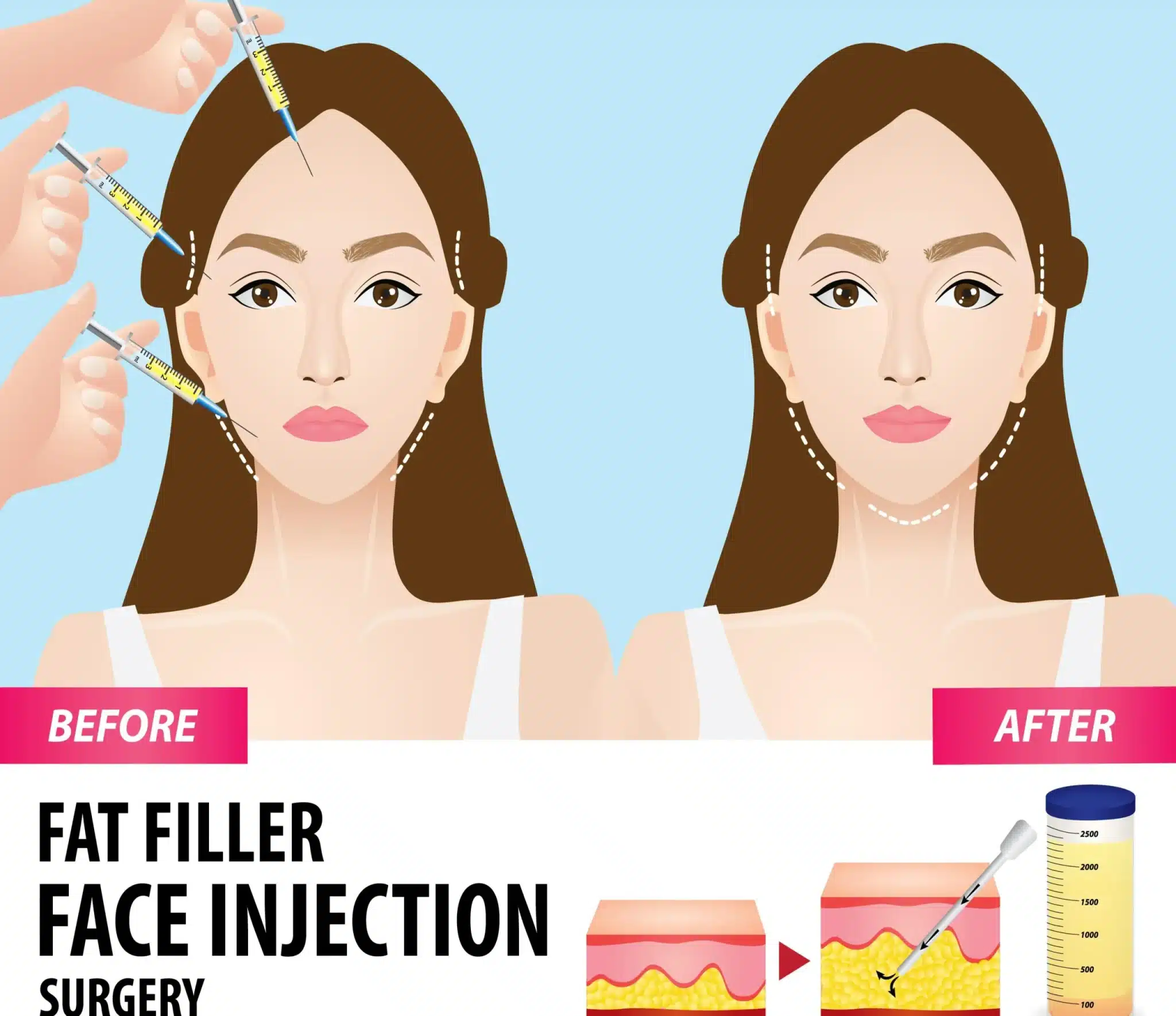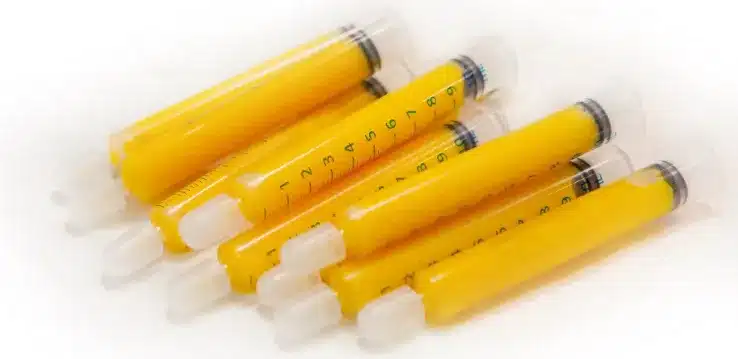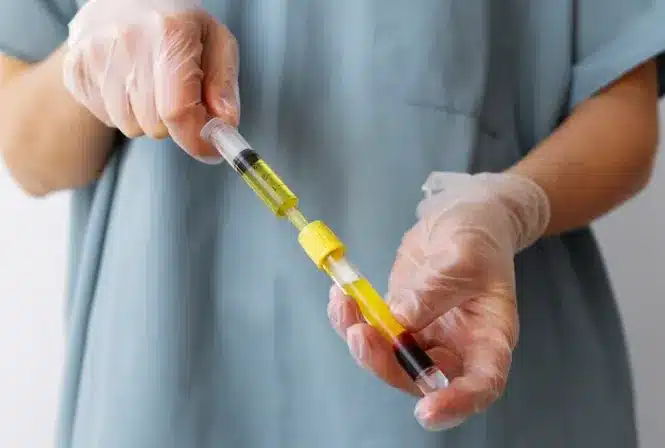Unlocking a spectrum of advantages, fat transfers offer unparalleled benefits in lip augmentation, promising natural-looking results with a dual benefit of enhancing both lips and sculpting the physique. This innovative technique ensures a seamless integration of the transferred fat, sculpting soft and plump lips while concurrently contouring the donor site for a more sculpted physique. The harmonious blend of aesthetic enhancement and bodily refinement epitomizes the multifaceted advantages bestowed by fat transfers, enticing patients with the allure of personalized, long-lasting results.
Fat Transfers to Lips
Fat transfers to lips, often called lip augmentation via fat grafting, is a procedure where fat is harvested from one part of the patient’s body and injected into their lips. This method is an alternative to other lip augmentation procedures like dermal fillers, offering a more natural approach since the filler material comes directly from the patient’s body.
What is a Fat Transfer?
Fat transfer, also known as fat grafting or lipofilling, is a surgical process where fat is removed from specific body parts, processed, and reintroduced into another area of the same body. The procedure uses the patient’s adipose tissue to correct or augment the desired area.
Plastic surgery is a multi-million-dollar industry, with Botox among one of the most popular treatments, alongside fillers and fat transfers.
Officially known as the botulinum toxin, it works by relaxing the muscles to give a more youthful complexion.
Explaining how it works, the U.K.’s health service, the NHS, said on its website: “Botox injections relax the muscles in your face to smooth out lines and wrinkles, such as crow’s feet and frown lines.”
It’s not a permanent procedure, and usually lasts up to four months. But it can take a while to see the effects, as one doctor demonstrated on his social media pages, with his post amassing more than 100,000 views.
Clinic contact number: +989371200167

Where is the Fat Produced From?
The fat used for transfer is typically harvested from areas of the body where adipose tissue is abundant. Common donor sites include:
- Abdomen
- Thighs
- Hips
- Buttocks
Step-by-Step Procedure of Fat Transfers to Lips
Fat transfer, also known as fat grafting surgery or fat injection, is a cosmetic procedure that involves transferring fat from one area of the body to another to enhance volume, shape, and contour. It is a natural and effective way to achieve desired results, as it utilizes the patient’s own fat cells.
The procedure of fat transfer to the lips, also known as autologous fat grafting, involves several steps to ensure optimal results. Here’s a step-by-step guide:
Consultation
The process begins with a consultation with a board-certified plastic surgeon. During this appointment, the surgeon evaluates the patient’s lips, discusses their goals and expectations, and determines if they are a suitable candidate for fat transfer.
In the context of autologous fat grafting, the consultation phase is a crucial step in the overall procedure, serving as the foundation for personalized treatment planning and ensuring patient satisfaction. Here’s how the consultation process typically unfolds:
Initial Assessment
The consultation begins with an initial assessment, during which the plastic surgeon evaluates the patient’s concerns, aesthetic goals, and medical history related to both the desired treatment area and potential donor sites for fat harvesting.
Discussion of Expectations
The surgeon and patient engage in a thorough discussion about the desired outcomes of the fat grafting procedure. This conversation may include specific goals for volume enhancement, contour refinement, or rejuvenation of the targeted area, as well as realistic expectations regarding the potential results and limitations of the procedure.
Evaluation of Anatomy
The surgeon carefully evaluates the patient’s facial or body anatomy, taking note of factors such as skin elasticity, tissue quality, and asymmetries. This assessment helps determine the suitability of autologous fat grafting for achieving the desired aesthetic improvements and informs the development of a tailored treatment plan.
Preparation
Before the procedure, the patient may be advised to avoid certain medications and supplements that can increase the risk of bleeding. Additionally, the surgeon may mark the areas for lip enhancement and take photographs for reference.
Anesthesia
On the day of the procedure, local anesthesia is typically administered to numb the lips and surrounding areas. In some cases, sedation or general anesthesia may be used for patient comfort.
Fat Harvesting
The surgeon begins by harvesting fat from a donor site on the patient’s body, commonly the abdomen, thighs, or hips. A small incision is made in the donor area, and liposuction is used to extract the fat cells.

Fat Transfer Quality Influences Longevity
The quality of fat transfer plays a crucial role in determining the longevity of results. When fat is harvested, processed, and injected with precision and care, it has the potential to provide long-lasting enhancement. One key factor influencing longevity is the survival rate of transferred fat cells. During the harvesting and processing stages, delicate fat cells must be handled gently to minimize damage and maximize viability. Experienced surgeons employ techniques to ensure the highest possible survival rate of transferred fat cells, such as using low-pressure liposuction to harvest fat and employing purification methods to remove impurities and damaged cells.
Moreover, the integration of transferred fat cells with surrounding tissues is essential for long-term success. Proper placement and distribution of fat during injection facilitate this integration, allowing the transferred fat to establish a blood supply and become a permanent part of the recipient site. Techniques such as microdroplet injection, where fat is deposited in small, even layers, promote better integration and reduce the risk of fat necrosis or cell death. Additionally, ensuring adequate vascularity and blood flow to the recipient area through meticulous surgical technique and post-operative care enhances the survival and longevity of transferred fat.
Lastly, patient factors and lifestyle choices also influence the longevity of fat transfer results. Maintaining a stable weight and healthy lifestyle can help preserve the volume and contour achieved through fat transfer. Significant weight fluctuations or unhealthy habits such as smoking can compromise blood flow to the transferred fat cells, leading to diminished longevity of results. Patients are often advised to follow post-operative care instructions provided by their surgeon, including avoiding activities that may disrupt the healing process and attending follow-up appointments to monitor progress. By optimizing fat transfer quality and addressing patient-related factors, surgeons can help ensure long-lasting and satisfactory outcomes for individuals undergoing fat transfer procedures.
Clinic contact number: +989371200167
Lifestyle Factors Affect the Composure to Transferred Fat
Lifestyle factors play a significant role in determining the longevity and composure of transferred fat following fat transfer procedures. Firstly, maintaining a stable and healthy weight is crucial for preserving the volume and contour achieved through fat transfer. Significant fluctuations in weight can impact the distribution of transferred fat cells, leading to uneven or diminished results. Moreover, fluctuations in weight can affect the vascularity and blood supply to the transferred fat, potentially compromising its survival and integration with surrounding tissues. By maintaining a stable weight through balanced nutrition and regular exercise, patients can help ensure the long-term success of their fat transfer procedure.
Additionally, smoking has a detrimental effect on the viability and integration of transferred fat cells. Nicotine and other chemicals in tobacco smoke constrict blood vessels and reduce blood flow to tissues, including those where fat transfer has been performed. This diminished blood supply can result in decreased oxygenation and nutrient delivery to transferred fat cells, leading to cell death and resorption. Therefore, patients are typically advised to refrain from smoking or using nicotine products before and after fat transfer procedures to optimize the survival and longevity of transferred fat.
Furthermore, engaging in activities that promote overall health and well-being can positively impact the composure of transferred fat. Adequate hydration, sufficient sleep, and stress management techniques can support the body’s healing process and optimize tissue regeneration. By prioritizing a healthy lifestyle and minimizing habits that can compromise blood flow and tissue health, patients can enhance the likelihood of achieving satisfactory and long-lasting results from fat transfer procedures. Consulting with a qualified plastic surgeon and adhering to their pre-operative and post-operative guidelines can further optimize outcomes and promote the successful integration of transferred fat cells.
Clinic contact number: +989371200167
Lip Enhancement Beyond Fillers
Fat transfers to the lips offer a range of benefits, making them a popular choice for individuals seeking natural-looking lip augmentation. Renowned figures in the field, such as Dr. Sydney Coleman from New York University, have contributed significantly to advancing techniques and understanding the nuances of fat grafting procedures. Their research has underscored the efficacy and safety of fat transfers, establishing them as a viable option for lip enhancement. Moreover, clinics like the Miami Cosmetic Surgery Center, recognized for their expertise in cosmetic procedures, have reported a significant increase in demand for lip augmentation using fat transfers in recent years.
According to statistics from the American Society of Plastic Surgeons, fat transfers to the lips have shown steady growth, with a notable rise in the number of procedures performed annually, reflecting the increasing popularity of this technique among patients seeking natural and long-lasting results. The benefits of fat transfers to the lips extend beyond mere augmentation, with outcomes often surpassing those of synthetic fillers. Apart from achieving fuller lips, patients experience enhanced lip contouring and definition, thanks to the precision of the procedure and the ability to sculpt the lips to complement the facial features.
Additionally, fat transfers offer a more natural feel and appearance compared to synthetic fillers, as the transferred fat integrates seamlessly with the surrounding tissues. Furthermore, fat transfers have a dual benefit of contouring the donor site, such as the abdomen or thighs, resulting in a more sculpted physique. These advantages, coupled with the expertise of surgeons and the increasing accessibility of fat transfer procedures, have solidified fat transfers as a preferred method for lip augmentation.
Who is the Best Candidate for Fat Transfers to Lips?
Ideal candidates are the:
- With thinning lips due to aging.
- Desiring a more natural alternative to synthetic fillers.
- Having sufficient fat in donor areas.
- In good overall health.
- Having realistic expectations.
Age Consideration for Lip Fat Transfer
While there’s no specific age limit for fat transfers to lips, most candidates are adults in their late 20s to mid-60s. It’s essential to be healthy and have adequate fat deposits for the procedure.

The lips are certainly swollen from fat grafting to the lips – the period of time taken for the swelling to go down varies depending on the amount of augmentation desired. Dr Warwick Nettle
10 Benefits of Fat Transfers to Lips
- Natural Appearance: Using one’s fat results in a more natural and harmonious look, unlike synthetic fillers, which can appear artificial.
- Lasting Results: The results of fat transfers are often longer lasting than many synthetic fillers. Once the fat settles and integrates, the results can last for several years.
- Minimized Allergic Reactions: Since the filler material comes directly from the patient’s body, there is a substantially reduced risk of allergic reactions, which can sometimes occur with synthetic fillers.
- Dual Benefit: The process requires liposuction from a donor site (like the abdomen or thighs), so the patient also benefits from body contouring in that area.
- Minimal Scarring: The procedure involves tiny liposuction and fat injection incisions, which reduces the potential for noticeable scars.
- No Foreign Substances: The body is less likely to reject or react adversely to its tissues than foreign materials.
- Tailored Results: Fat transfers can be tailored to achieve specific results based on the individual’s desires, allowing for a more personalized outcome.
- Safe Procedure: When conducted by experienced and certified professionals, fat transfers have been established as a safe practice with a well-understood risk profile.
- Increased Self-esteem: Many individuals report increased confidence and self-esteem after enhancing their lip volume naturally.
- Cost-Effective in the Long Run: Though the initial cost might be higher than synthetic fillers, the long-lasting results can make fat transfers more cost-effective over time as fewer touch-ups are required.
it would help if you also were well-informed about the potential risks of fat transfers to lips.
10 Risks of Fat Transfers to Lips
- Overcorrection: Too much fat might transfer, leading to overly large lips.
- Uneven Results: Fat might settle unevenly.
- Fat Resorption: Some of the transferred fat might get reabsorbed by the body.
- Infection: As with any surgical procedure, there’s a risk of infection.
- Bleeding: Possible bleeding at the injection site.
- Scarring: Though minimal, scars can occur.
- Prolonged Swelling: Might last longer than expected.
- Cysts Formation: Small lumps or cysts might form.
- Fat Necrosis: Transferred fat cells might die.
- Adverse Reaction to Anesthesia: Rare but possible complications from anesthesia.
Recovery time
Recovery time following a fat transfer procedure can vary depending on several factors, including the specific areas treated, the extent of liposuction performed for fat harvesting, and individual healing capabilities. Generally, patients can expect some degree of swelling, bruising, and mild discomfort at both the donor and recipient sites immediately after the procedure. This initial swelling typically subsides within the first week, although residual swelling may persist for several weeks to months, gradually resolving over time. Patients may be advised to wear compression garments to minimize swelling and support the healing process, especially in areas where liposuction was performed.
During the initial stages of recovery, patients are typically advised to avoid strenuous activities and heavy lifting to prevent complications and facilitate proper healing. While discomfort and swelling are common after fat transfer procedures, pain medication prescribed by the surgeon can help manage any discomfort during the recovery period. Additionally, adhering to post-operative instructions regarding wound care, medication usage, and follow-up appointments is crucial for optimizing outcomes and minimizing the risk of complications.
It’s essential for patients to be patient with the recovery process, as final results from fat transfer procedures may take several weeks to months to fully manifest. Over time, as swelling subsides and transferred fat integrates with surrounding tissues, patients can enjoy the natural-looking results of fat transfer. However, individual recovery experiences can vary, and patients should communicate any concerns or unexpected symptoms with their plastic surgeon promptly. By following post-operative guidelines and attending scheduled follow-up appointments, patients can promote a smooth recovery and achieve the desired aesthetic outcomes from their fat transfer procedure.
The Fat transfer gives long-lasting Results
Fat transfer procedures offer long-lasting results compared to other injectable fillers because they utilize the patient’s own fat cells, which integrate with surrounding tissues and become a permanent part of the recipient site. Unlike synthetic fillers that are eventually metabolized by the body, transferred fat cells can provide lasting volume enhancement and contour improvement. While some of the transferred fat may be reabsorbed by the body in the months following the procedure, a significant portion typically remains, resulting in enduring aesthetic enhancement. With proper technique and post-operative care, fat transfer procedures can achieve natural-looking and sustainable results, providing patients with enhanced facial or body contours for years to come.
Moreover, the longevity of results from fat transfer procedures can be further enhanced by maintaining a stable weight and adopting a healthy lifestyle. Significant weight fluctuations or unhealthy habits such as smoking can compromise the survival and integration of transferred fat cells. By following a balanced diet, staying hydrated, and engaging in regular exercise, patients can optimize blood flow to transferred fat cells and support tissue health, prolonging the longevity of their fat transfer results. Consulting with a qualified plastic surgeon and adhering to their recommendations for post-operative care can help ensure optimal outcomes and maximize the longevity of results from fat transfer procedures.
Summary
In conclusion, fat transfer surgery stands as a pinnacle in lip augmentation, offering a myriad of benefits that align with contemporary aesthetic ideals. Through the process of autologous fat grafting, patients can achieve lip enhancements that are not only natural-looking but also personalized to their unique facial anatomy. This tailored approach ensures customized lip enhancement, resulting in soft and plump lips that seamlessly integrate with the rest of the face. Moreover, the dual benefit of fat transfers extends beyond lip augmentation, allowing patients to sculpt other areas of the body while enhancing their lips, ultimately leading to a more harmonious and balanced physique. As a result, fat transfer surgery emerges as a transformative solution, empowering individuals to achieve their desired aesthetic goals with confidence and satisfaction.
FAQs
1. How long does the result of a Fat Transfers to Lips last?
While some transferred fat might get reabsorbed, many patients enjoy the results for several years.
2. How do Fat Transfers to Lips different from synthetic lip fillers?
Fat transfers use the patient’s body fat, while synthetic fillers use substances like hyaluronic acid. Fat transfers usually offer longer-lasting results than many synthetic fillers.
3. Are fat transfers to the lips permanent? Fat transfers to the lips can provide long-lasting results. While some of the transferred fat may be reabsorbed by the body over time, a significant portion typically remains, offering lasting enhancement. However, individual results may vary, and additional touch-up sessions may be needed to maintain the desired lip volume.
4. How natural do fat transfers to the lips look and feel? Fat transfers to the lips provide natural-looking results as the transferred fat integrates with the surrounding tissues. The lips feel soft and natural, without the firmness or unnatural texture sometimes associated with synthetic fillers.
5. Is there a risk of allergic reaction with fat transfers to the lips? Since the fat used in the procedure comes from the patient’s own body, there is minimal risk of allergic reactions or rejection. This makes fat transfers to the lips a safe and suitable option for many individuals seeking lip augmentation.
6. How does recovery from fat transfers to the lips compare to other lip augmentation methods? Recovery from fat transfers to the lips is generally similar to other lip augmentation procedures. Patients may experience swelling, bruising, and mild discomfort at the injection sites, but these symptoms typically subside within a week. Compared to synthetic fillers, fat transfers may involve a longer recovery period due to the additional liposuction step.
Fat Transfer To The Lips Sydney | Lip Surgery Sydney Australia | Dr Nettle (drwarwicknettle.com.au)
Woman Takes Photo Every Day Revealing How Long It Takes for Botox to Work (newsweek.com)




